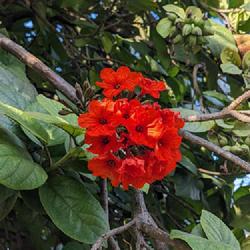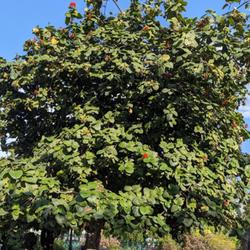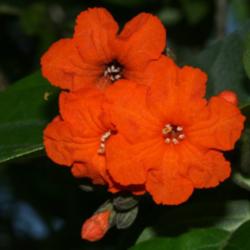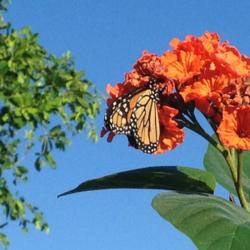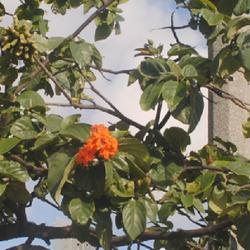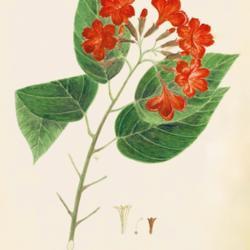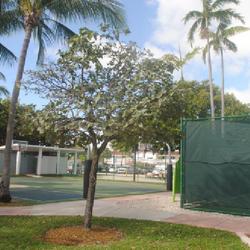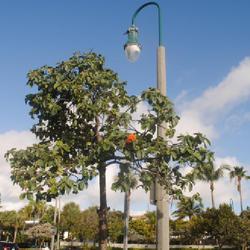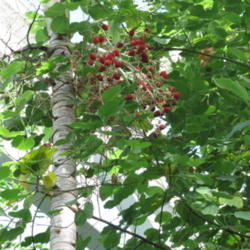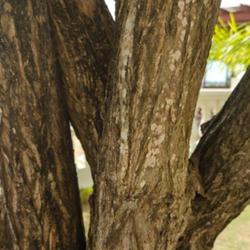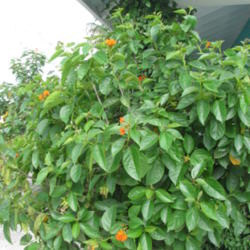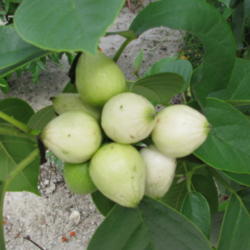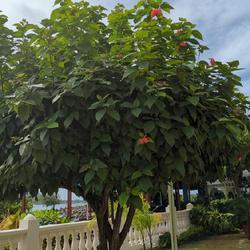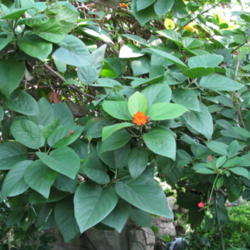| Plant Habit: | Tree |
| Life cycle: | Perennial |
| Sun Requirements: | Full Sun Full Sun to Partial Shade |
| Water Preferences: | Mesic |
| Minimum cold hardiness: | Zone 10a -1.1 °C (30 °F) to +1.7 °C (35 °F) |
| Maximum recommended zone: | Zone 11 |
| Plant Height: | 20 feet |
| Plant Spread: | 20 feet |
| Leaves: | Evergreen Other: may be irritating to some people |
| Fruit: | Showy Edible to birds Other: edible to humans but have little flavor. The fruits are fragrant. |
| Flowers: | Showy |
| Flower Color: | Orange Other: Deep red/orange |
| Bloom Size: | 1"-2" |
| Flower Time: | Late winter or early spring Spring Late spring or early summer Summer Late summer or early fall Fall Late fall or early winter |
| Underground structures: | Taproot |
| Suitable Locations: | Beach Front Street Tree Xeriscapic |
| Uses: | Shade Tree Flowering Tree Will Naturalize |
| Edible Parts: | Fruit |
| Wildlife Attractant: | Bees Birds Butterflies Hummingbirds |
| Resistances: | Humidity tolerant Drought tolerant Salt tolerant |
| Propagation: Seeds: | Provide light Sow in situ Other info: Easy to propagate by seed. Plant them & they will sprout. Not picky about depth. |
| Propagation: Other methods: | Cuttings: Stem Cuttings: Tip Layering |
| Containers: | Not suitable for containers |
| Miscellaneous: | Tolerates poor soil |
